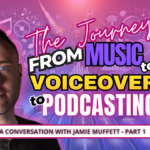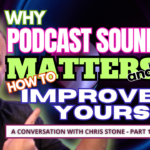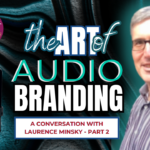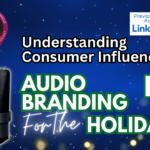The Journey from Music to Voiceover to Podcasting: A Conversation with Jamie Muffett – Part 1 “There was one we did a few years ago. This was while COVID was going on and it was with Nicolas Cage. And he was such a surprising guy. I mean, we all know, kind of… He’s an unusual […]
audio branding
Why Podcast Sound Quality Matters and How to Improve Yours: A Conversation with Chris Stone – Part 1
Why Podcast Sound Quality Matters and How to Improve Yours: A Conversation with Chris Stone – Part 1 “An intro video needs to let people know, ‘Hey, this is who the show’s for, and this is what you’re about to see, what you’re about to witness.’ And that audio is a huge component of it. […]
The Art of Audio Branding: A Conversation with Laurence Minsky – Part 2
The Art of Audio Branding: A Conversation with Laurence Minsky – Part 2 “Why not brand the sound so people know that they’re with a certain bank? Why not make it a little bit more ‘here’s your money’, which is a little bit more successful sounding, versus ‘don’t forget your card,’ which could be a […]
Understanding Consumer Influence: Audio Branding for the Holidays – Part 2
Understanding Consumer Influence: Audio Branding for the Holidays – Part 2 “Yeah, there’s a real opportunity here. I mean there’s a trend here in the conversation that we talk about the nostalgia and these spots that keep coming back. There’s equity in that. There’s, I mean, the giant equity. Even in a seasonal piece of […]
Unleashing the Power of Sound: Audio Branding for the Holidays – Part 1
Unleashing the Power of Sound: Audio Branding for the Holidays – Part 1 “I was just thinking that humans generally like things that are new, but not that new, and you probably have the familiar tune. And then if you hear something clever, I think the biggest danger is cheesiness. But if you have something […]
The New Era of Sonic Branding: A Conversation with Jack Bradley – Part 2
The New Era of Sonic Branding: A Conversation with Jack Bradley – Part 2 “My now retired business partner, who was the head composer for this company for years and years and years, he put that perfectly, and he said, I remember he talked to a young composer. He said, ‘Look, at the end of […]





